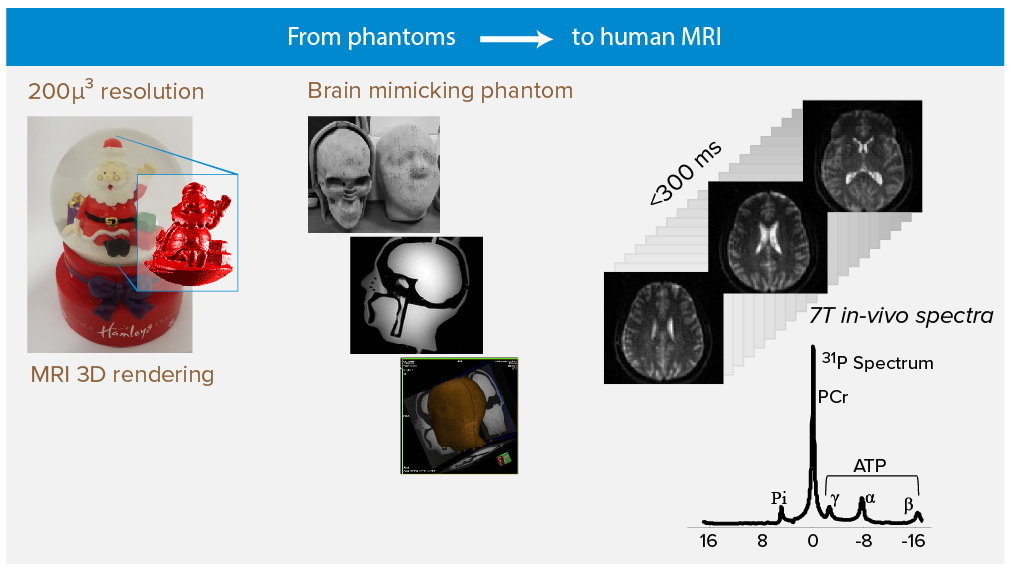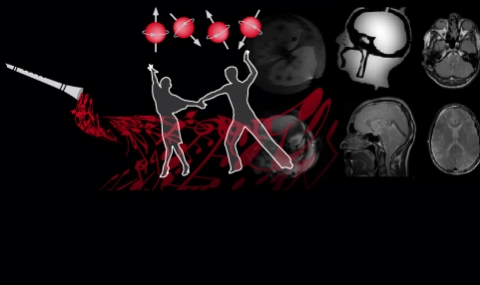Our lab develops dedicated MRI and fMRI methods for high temporal and spatial resolution application. Ultra-high field MRI (≥7T) promises higher SNR, but also includes many new challenges when applied to the human scale. These challenges must be overcome before the full SNR benefits can be utilized.
We study methods to incorporate pulse sequence development with new multi-channel receive acquisition for higher robustness to static magnetic field (B0) inhomogeneity and shorter T2* and T2 relaxation properties, as well as with new multi-channel transmit coils coping with RF magnetic field (B1) inhomogeneity challenge.
Our studies include hands-on pulse sequence development, simulations of the spins behavior and EM simulations of RF field distribution. Translating the new methods for human imaging, we also develop phantoms to examine high resolution and special mimicking brain phantoms.
Functional metabolic activation in the brain using hydrogen and phosphorous Magnetic Resonance Spectroscopic Imaging and sodium MRI
Functional human brain studies can especially benefit from metabolic imaging in-vivo, however the challenges are still numerous. A major boost in SNR has been achieved by moving to higher magnetic fields, like 7 T and 9.4 T scanners, which made hydrogen and phosphorous MRSI as well as sodium acquisition more applicable for human imaging1,2.
We study and develop new methods, aiming for functional brain studies, among which an interleaved acquisition of common methods with phosphorous and sodium imaging, optimizing the acquisition based on simulations. We develop new fast MRSI methods that can be incorporated in such interleaved acquisitions.

1. Thulborn, K., Lui, E., Guntin, J., Jamil, S., Sun, Z., Claiborne, T. C., & Atkinson, I. C. (2016). Quantitative sodium MRI of the human brain at 9.4 T provides assessment of tissue sodium concentration and cell volume fraction during normal aging. NMR in Biomedicine, 29(2), 137-143.
2. Lei, H., Zhu, X. H., Zhang, X. L., Ugurbil, K., & Chen, W. (2003). In vivo 31P magnetic resonance spectroscopy of human brain at 7 T: an initial experience. Magnetic resonance in medicine, 49(2), 199-205.


